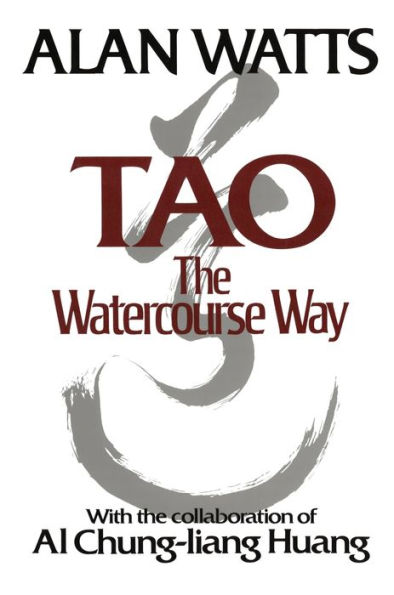Read an Excerpt
2. The Yin-Yang Polarity
At the very roots of Chinese thinking and feeling there lies the principle of polarity, which is not to be confused with the ideas of opposition or conflict. In the metaphors of other cultures, light is at war with darkness, life with death, good with evil, and the positive with the negative, and thus an idealism to cultivate the former and be rid of the latter flourishes throughout much of the world. To the traditional way of Chinese thinking, this is as incomprehensible as an electric current without both positive and negative poles, for polarity is the principle that + and –, north and south, are different aspects of one and the same system, and that the disappearance of either one of them would be the disappearance of the system.
People who have been brought up in the aura of Christian and Hebrew aspirations find this frustrating, because it seems to deny any possibility of progress, an ideal which flows from their linear (as distinct from cyclic) view of time and history. Indeed, the whole enterprise of Western technology is “to make the world a better place”—to have pleasure without pain, wealth without poverty, and health without sickness. But, as is now becoming obvious, our violent efforts to achieve this ideal with such weapons as DDT, penicillin, nuclear energy, automotive transportation, computers, industrial farming, damming, and compelling everyone, by law, to be superficially “good and healthy” are creating more problems than they solve. We have been interfering with a complex system of relationships which we do not understand, and the more we study its details, the more it eludes us by revealing still more details to study. As we try to comprehend and control the world it runs away from us. Instead of chafing at this situation, a Taoist would ask what it means. What is that which always retreats when pursued? Answer: yourself. Idealists (in the moral sense of the word) regard the universe as different and separate from themselves—that is, as a system of external objects which needs to be subjugated. Taoists view the universe as the same as, or inseparable from, themselves—so that Lao-tzu could say, “Without leaving my house, I know the whole universe.” This implies that the art of life is more like navigation than warfare, for what is important is to understand the winds, the tides, the currents, the seasons, and the principles of growth and decay, so that one’s actions may use them and not fight them. In this sense, the Taoist attitude is not opposed to technology per se. Indeed, the Chuang-tzu writings are full of references to crafts and skills perfected by this very principle of “going with the grain.” The point is therefore that technology is destructive only in the hands of people who do not realize that they are one and the same process as the universe. Our overspecialization in conscious attention and linear thinking has led to neglect, or ignore-ance, of the basic principles and rhythms of this process, of which the foremost is polarity.
In Chinese the two poles of cosmic energy are yang (positive) and yin (negative), and their conventional signs are respectively — and – – . The ideograms indicate the sunny and shady sides of a hill, fou, and they are associated with the masculine and the feminine, the firm and the yielding, the strong and the weak, the light and the dark, the rising and the falling, heaven and earth, and they are even recognized in such everyday matters as cooking as the spicy and the bland. Thus the art of life is not seen as holding to yang and banishing yin, but as keeping the two in balance, because there cannot be one without the other. When regarding them as the masculine and the feminine, the reference is not so much to male and female individuals as to characteristics which are dominant in, but not confined to, each of the two sexes. Obviously, the male has the convex penis and the female the concave vaginal and though people have regarded the former as a possession and the latter as a deprivation (Freud’s “penis envy”), any fool should be able to recognize that one cannot have the outstanding without the instanding, and that a rampant membrum virile is no good without somewhere to put it, and vice versa, But the male individual must not neglect his female component, not the female her male. This Lao-tzu says:
Knowing the make but keeping the female, one becomes a universal stream. Becoming a universal stream, one is not separated from eternal virtue.
The yang and the yin are principles, not men and women, so that there can be no true relationship between the affectedly tough male and the affectedly flimsy female.
The key to the relationship between yang and yin is called hsiang sheng, mutual arising or inseparability. As Lau-tzu puts it:
When everyone knows beauty as beautiful, there is already ugliness;
When everyone knows good as goodness, there is already evil.
“To be” and “not to be” arise mutually;
Difficult and easy are mutually realized;
Long and short are mutually contrasted;
High and low are mutually posited; . . .
Before and after are in mutual sequence,
They are thus like the different, but inseparable, sides of a coin, the poles of a magnet, or pulse and interval in any vibration. There is never the ultimate possibility that either one will win over the other, for they are more like lovers wrestling than enemies fighting. But it is difficult in our logic to see that being and nonbeing are mutually generative and mutually supportive, for it is the great and imaginary terror of Western man that nothingness will be the permanent end of the universe. We do not easily grasp the point that the void is creative, and that being comes from nonbeing as sound from silence and light from space.



